About Our Plant Collections
Cheekwood’s maintains collections of specific taxa and plant groupings including the historic boxwood, dogwood, herb, hydrangea, southeastern native, and redbud. Plants are labeled to convey both scientific and common names, family names, native origin and are mapped using GIS software.
Arboretum
Since its inception as a public botanical garden in 1960, Cheekwood has strived to collect and showcase trees native to Tennessee and the Southeast as well as species from other regions, countries, and continents. Tree cultivars bred for desired traits, such as disease resistance, is a significant facet of the collecting mission. Cheekwood continues to diversify and enrich the arboretum offering, fostering a rich and engaging space for guests and students to explore, enjoy, and learn.
The Arboretum at Cheekwood was awarded a Level 4 accreditation with the regional organization, Tennessee Urban Forestry Council (TUFC) in 2010. In 2020, the estate was granted a Level II status by the global organization, ArbNet and will apply for a Level III status in 2022. Within the over 2,100 trees on the property, Cheekwood has documented 1,267 deciduous trees; 576 evergreens; 16 deciduous conifers; and 238 dogwoods.
Cheekwood’s three primary tree collections include the Nationally Accredited Cornus Collection™, the historic collection, and trees native to the southeastern United States. The one-of-a-kind collection of dogwoods weave together a series of distinct gardens along the property’s eastern ridge, ending at the base of the Mansion & Museum, the property’s historic core. The landscape is embraced by a woodland sculpture trail, with a fourteen-acre forest that serves as the primary venue for the native tree collection. As both a botanical garden and arboretum, we strive to always provide something new to explore, appreciate, and astonish, while preserving that which is historically sacred.
Emerald Ash Borer Response Program
Made to manage and protect a large population of native ash trees, our Emerald Ash Borer Response Program is helping conserve this species for future generations to observe, study, and enjoy.
Learn More
Virtual Arboretum Tours
Can’t make it to Cheekwood in person? Enjoy a self-guided, virtual tour through Cheekwood’s Arboretum.

Historic Plant Collection
1. Historic Trees
With the aid of the estate’s historic photographs and original site plans, Cheekwood has identified several key historic trees. Interpreting this collection within the scope of what was once a family home contextualizes time in a very specific way. Many of ash, oak, and cedar trees were present long before the estate’s inception, establishing the very bones of the beloved landscape.
Perhaps the most recognizable of them all is the handsome Chinquapin oak gracing the Swan Lawn, though there are others. A great welcoming ash tree beckons guests to enter the Hardison Gates, and, on the front lawn of the Cheek mansion, the pyramidal Shumard oak anchors the landscape along with ages old juniper and boxwood.
These trees are important to the estate’s legacy in both a historic and design context. They frame the story of a treasured family home and what would later become a place of respite for many. The oaks, hackberries, ash trees, and boxwood shrubs are the seminal plantings that Cheekwood strives to preserve, inspiring the continual refinement of the estate’s historic layer.

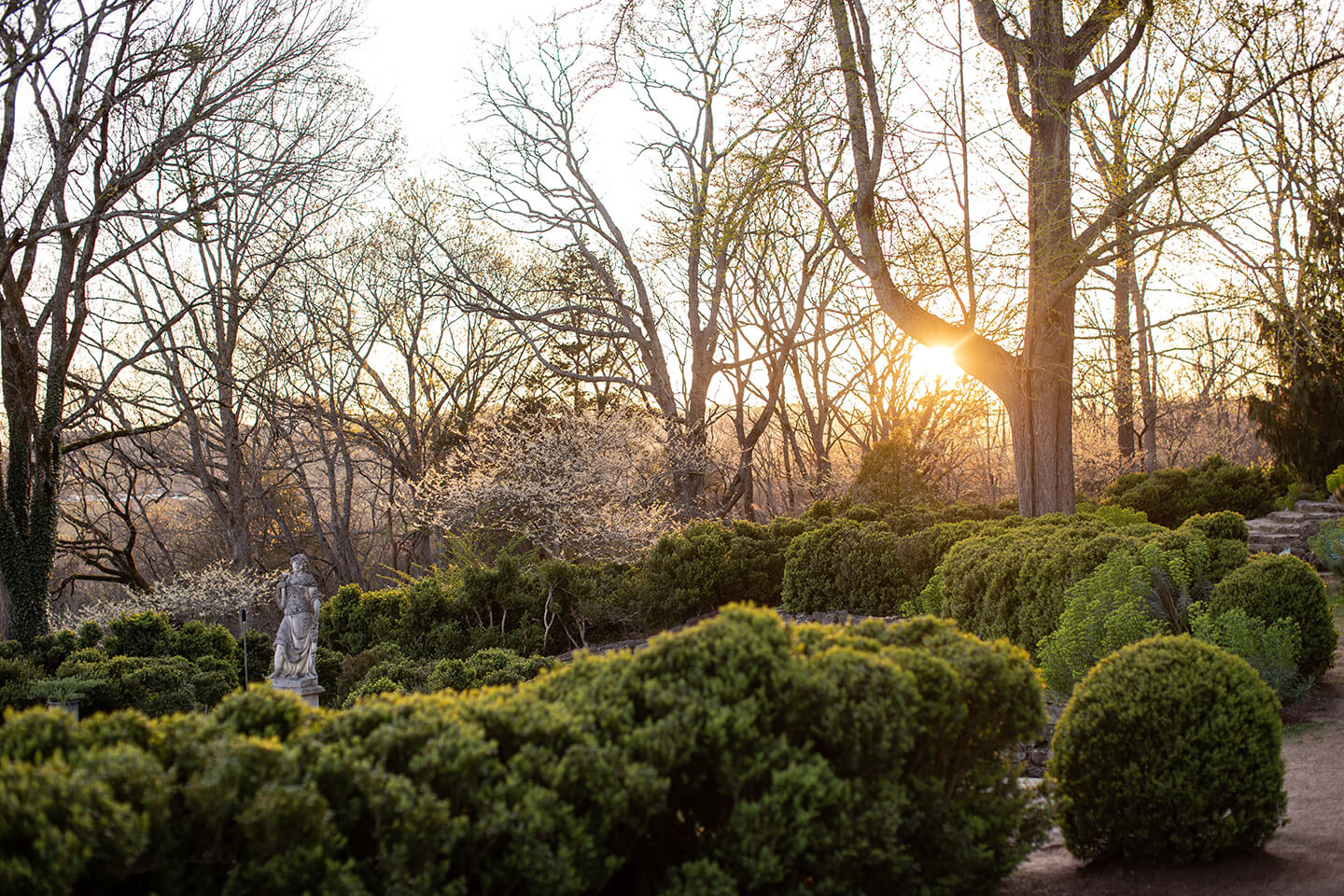
2. Boxwood
Leslie and Mabel Cheek had been acquiring specimen boxwood throughout the South for years. When the family moved to Belle Meade, their collection provided the green architecture of the garden rooms surrounding the home. During the early 20th century, a popular trend was to obtain and showcase mature plants in the landscape.
These large evergreen shrubs imbued estate homes borne from the successful ventures of the Industrial Revolution with a sense of antiquity. The extensive boxwood planting became central to the development of the Cheek’s estate and inevitably established Cheekwood’s very first horticultural collection. Today, the gardens grow just under 1800 individual boxwood shrubs varying in form, species, and cultivar.
3. Virginia Peck Daylily Collection
Not only was she prolific in the world of daylily breeding, Dr. Virginia Peck was also well known as a scholar and professor of Anglo-Saxon literature and modern poetry, teaching at Middle Tennessee State University from 1949-1977. In a plant laboratory based at her home, she crossed and developed her Hemerocallis varieties, inspired by Arthurian literature to christen her creations with names such as ‘Round Table’, Maid of Astolat’, and ‘Elfin Knight’.
Dr. Peck is also the hybridizer of the first known ruffled tetraploid, ‘Dance Ballerina Dance’ (1976). The daylily collection can be found to the right of the stairs leading from the Frist Learning Center to the Historic Mansion & Museum.
4. Jesse Wills Iris Collection
In the summer of 1977, an iris collection was donated to Cheekwood by Mrs. Ellen Wills and dedicated to her late husband, Jesse Ely Wills. Jesse Wills was a philanthropist and pillar of the business community, a poet, wildlife lover, and a famed iris hybridizer. He served as president of the American Iris Society for some time and won the Dykes Medal Award in 1947 for his outstanding blue creation that he named ‘Chilvary’.
Ninety-nine of Wills’ creations are registered with the American Iris Society and many are named to pay homage to Nashville-area landmarks. For example, there is ‘Natchez Trace’, a bi-tone of bronze and rose, and ‘Belle Meade’, a crisp blue.
The initial iris collection donated in 1977 planted the seed for something bigger and the memorial garden, Jesse Wills Perennial Garden, was established and opened in 1981. More than 40 years later, it remains a haven for songbirds and a myriad of pollinators, as well as the home for this beloved iris collection.

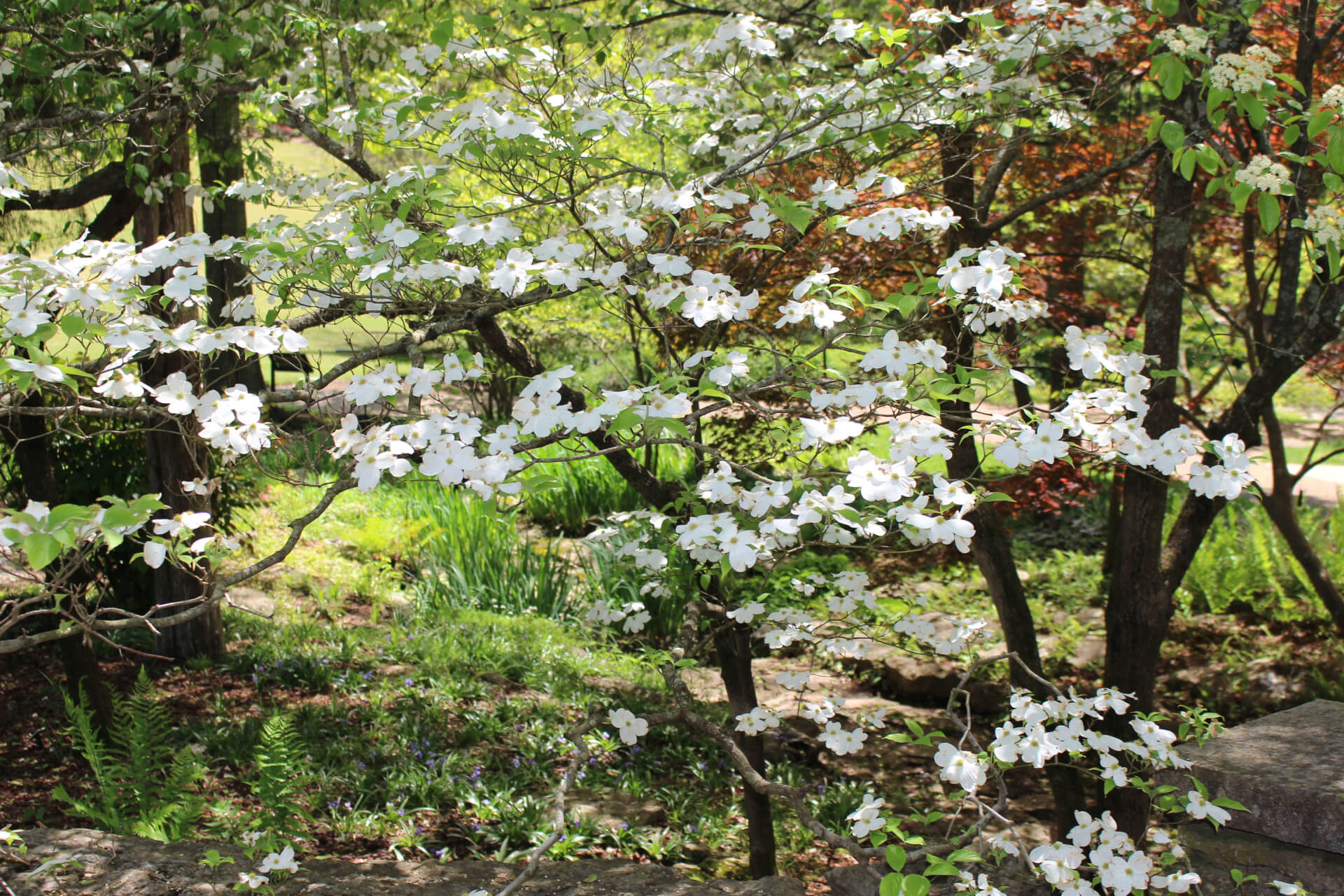
Cornus Collection
Extending throughout Cheekwood, from the Carell Dogwood Garden to the Ann & Monroe Carell Jr. Family Sculpture Trail, the estate currently features more than 300 individual dogwoods. Both tree and shrub forms are celebrated within the arboretum. With over 14 different species and 23 various varieties, dogwoods supply interests for all four seasons.
The Cornus collection displays a wide selection of woody Cornus species and cultivated varieties, particularly those that are well-suited to the Middle Tennessee climate. The collection represents both North American and Asian species as well as cultivars and hybrids of these species. The collection especially highlights Cornus species exhibiting superior disease and insect resistance, blooms of larger size or double form, exceptional foliage, interesting growth habits, as well as improved hardiness and vigor. The plants in the Cornus collection are incorporated into the landscape of the Carell Dogwood Garden and throughout other gardens where appropriate.
Becoming a Nationally Accredited Collection by the American Public Garden Association’s Plant Collections Network’s in 2012, enhancing the dogwood offering continues to be a significant mission. Cheekwood’s dogwood collection remains the only one of its kind to be recognized by this organization. The Gardens Team continues to stay informed about new cultivars and improved breeding of Cornus, using the information to educate the community about exciting new developments within the genus.
Southeastern Native Plant Collection
The elegantly rolling landscape of Cheekwood’s 55-acre property features stately native trees, shrubs, and perennials that illustrate Middle Tennessee’s cultural identity and trek through time. Elder Chinquapin, Shumard, and red oaks span the breadth of the estate, along with ash and hackberry trees. Understanding the traits of these native species gives insight pertaining to the land from which they grow and the many people with which they have cohabitated throughout centuries.
A prime example of a native tree’s story is that of the Chinquapin oak. It prefers alkaline soil and is typically found growing on top of limestone outcroppings. Its acorns were an important food source for the indigenous peoples of Middle Tennessee. Later, its wood was used to build fences during the Civil War. This oak serves as a larval host plant for White M Hairstreak and Gray Hairstreak Butterflies. Geology, ecology, and history merge to form the narrative of a single tree.
Cheekwood maintains, displays, and evaluates a wide selection of plants native to the southeastern United States.
Higher emphasis is placed on those species that are native to Tennessee, Federally or State listed as endangered, threatened, proposed endangered, and proposed threatened.

Examples of Trees within this collection:
- Quercus shumardii (Shumard Oak)
- Cornus florida (Flowering Dogwood)
- Magnolia grandiflora (Southern Magnolia)
- Juniperus virginiana (Red Cedar)
- Torreya taxodium (Stinking Cedar)
Examples of Shrubs within this collection:
- Ilex verticillata (Winterberry)
- Rhus aromatica (Fragrant Sumac)
- Rhododendron canescens (Mountain Azalea)
- Callicarpa americana (Beautyberry)
- Clethra alnifolia (Sweet Pepperbush)
Examples of Perennials within this collection:
- Solidago rugosa (Goldenrod)
- Polystichum acrostichoides (Christmas Fern)
- Echinacea purpurea (Tennessee Echinacea)
- Trillium sp. (Trillium)
- Spigellia marilandica (Indian Pink)
Display Collections
As a botanical garden, Cheekwood collects and preserves plants, both native and from afar, that fit within the parameters of Tennessee’s climate and soil conditions. The display collections serve an integral role at Cheekwood. Ornamentally robust with heirloom as well as contemporary cultivars and hybrids, each plant within the various collections has proven to perform well in the region. The collections also provide an educational component by representing taxonomic groups, and in many cases, explaining the uses of plants by indigenous peoples of the Americas as well as those of European colonists. Interpretational signage has been assigned to explain distinct collections throughout the grounds. Cheekwood strives to grow and maintain an impressive number of specimens, therefore demonstrating a wide range of forms, varieties, and cultivars that a taxon has to offer.
The Display Collection represents a wide range of plant forms, including bulbs, rhizomes, ferns, herbaceous perennials, shrubs, and trees. It is divided into eight subcategories. Though often found concentrated in certain areas on the grounds, the display collections grow throughout the various gardens at Cheekwood.
1. The Daffodil Collection
Cheekwood has enjoyed a close relationship with the Middle Tennessee Daffodil Society for several decades and has served as a venue for meetings and annual shows, as well as the American Daffodil Society National Convention and Show in 2018. At one time organized in an encyclopedic fashion, the collection has in recent years been displayed in large swaths, namely in the Basham Daffodil Field. Upcoming plans for this collection include fine tuning the large assortment into historic, classic, and modern, in addition to showcasing Wister and Pannil winners.
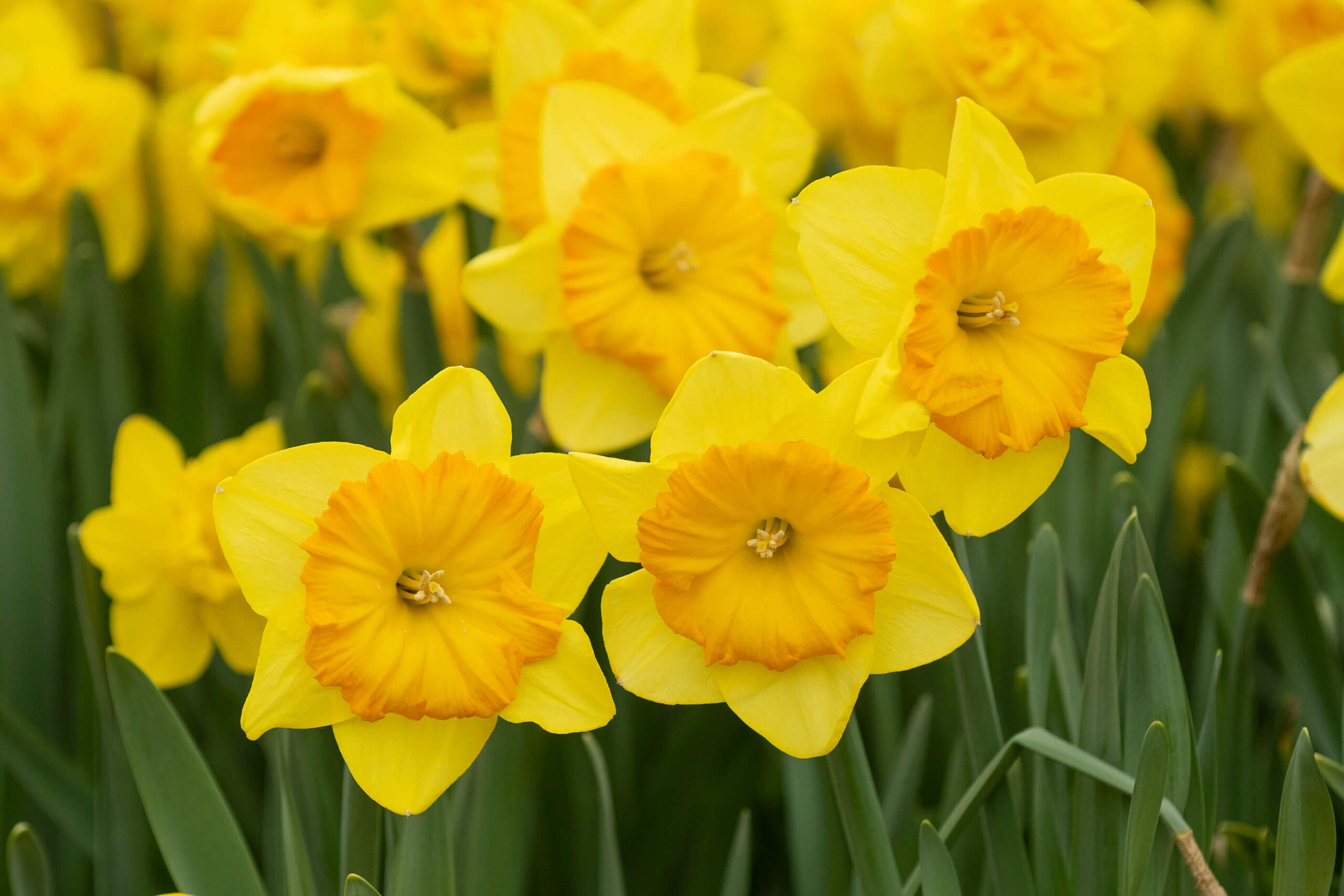
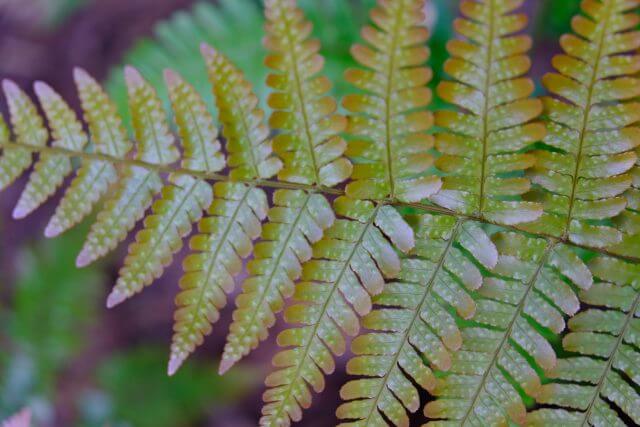
2. Fern Collection
Ferns can be found around every garden corner at Cheekwood. Widely known to be shade tolerant groundcovers, a few varieties, such as Cyrtomium falcatum (Japanese Holly Fern), are evergreen during the rather mild Tennessee winter. Cinnamon fern (Osmunda cinnamomea) unfurls around Cheekwood’s ponds and streams beginning in March, its fertile fronds decorated with golden brown fruit dots. Dryopteris erythrosora (Autumn fern) another evergreen species, brightens darker sections of the property with its corals and chartreuse tones. Cheekwood’s fern collection is represented with thirty-eight different species and over four thousand individuals.
3. Herb Collection
Neatly organized and displayed within the rustic, stone raised beds of the Herb Study Garden, plants known for a multitude of uses are showcased. A historical context is offered in two parallel beds; one grouping features species utilized by the indigenous people of North America, such as Aralia spinosa and goldenseal while another focuses on plants that the Europeans brought with them to the new land. Other sections are dedicated to culinary herbs, texture, fragrance, and herbs of the Mediterranean. The herb collection is cared for by the Nashville chapter of the Herb Society of America.

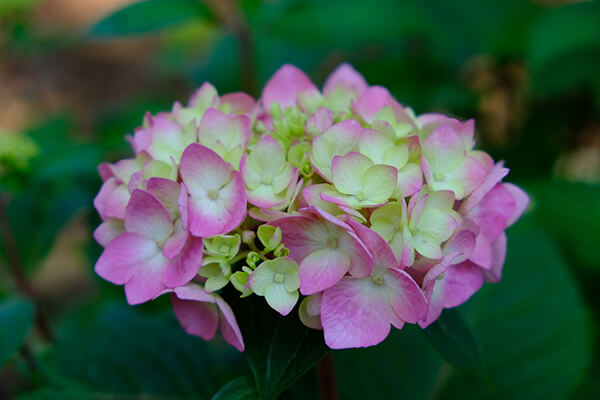
4. Hydrangea Collection
This classic among shrubs (and there is even a climber – Hydrangea anomala subsp. petiolaris!), Hydrangea is grown and beloved throughout the world. Currently, Cheekwood boasts seven species, calculating to a grand total of five hundred and seventy-two individuals. The core of the hydrangea collection can be appreciated in the Carell Dogwood Garden as companions to the multitude of Cornus species and in the Bracken Foundation Children’s Garden, where they surround a circular labyrinth. Prolific bloomers growing in part to full shade, these plants offer perfect sublayer structure in garden design. Lacecaps, oakleafs, big leaf, and smooth hydrangeas all offer stellar attributes such as flower longevity and fall color. Newer hybrids such as the Endless Summer series offer re-blooming effects.
5. Magnolia Collection
With eleven species and a number of crosses, Cheekwood is home to just under two hundred magnolias. The much adored and quintessential southern flower (Magnolia grandiflora) grows within both the historic core of the landscape and the most modern additions, as well as everywhere in between. In spring, the star and saucer magnolias light up the estate, on par with the forsythia and daffodils. Rare species — M. pyramidata and M. tripetala — live in the Howe Garden, at the edge of the pond near the endangered Torreya taxifolia, adding to the Jurassic flair.

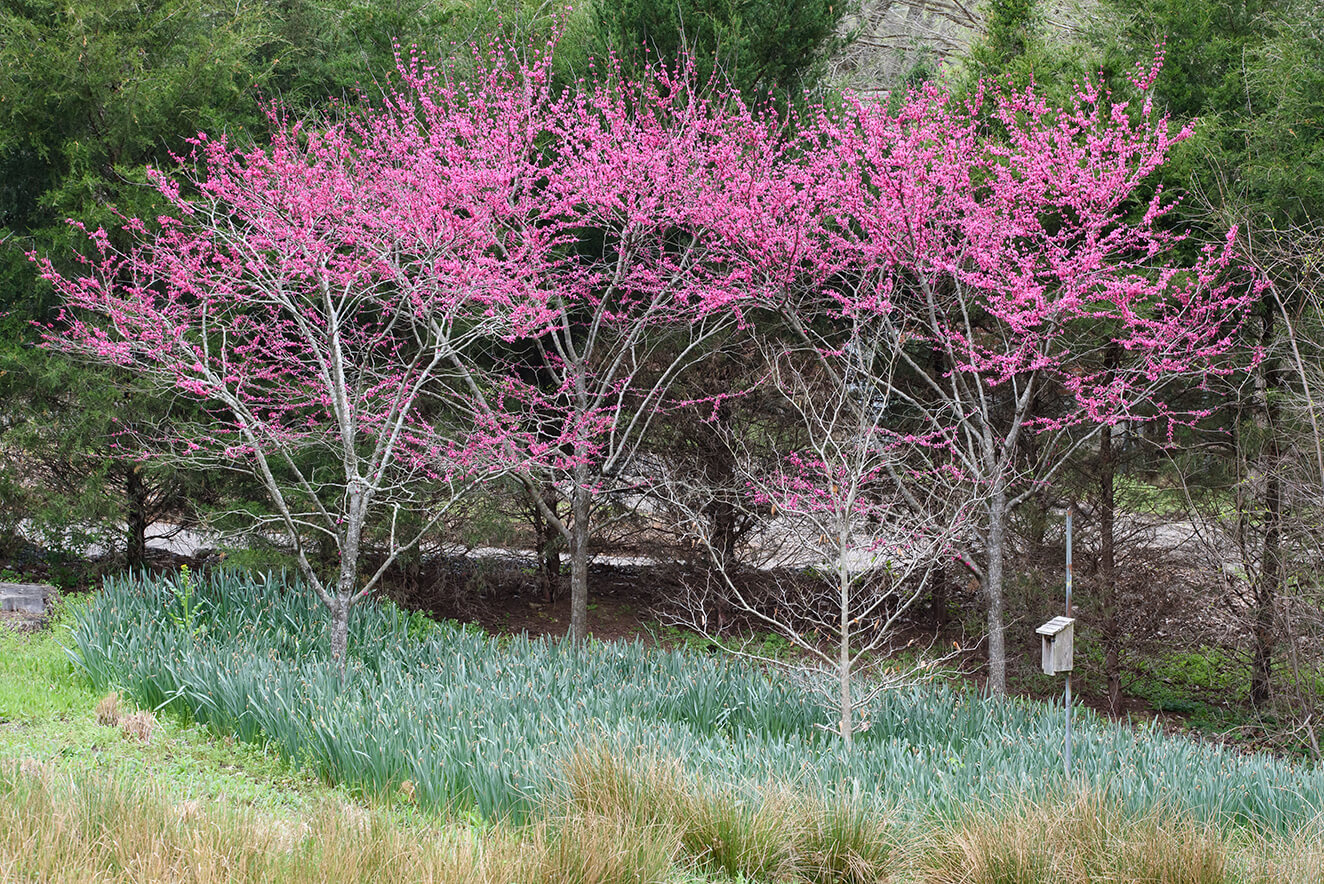
5. Redbud Collection
Cheekwood’s redbud collection is mostly comprised of the native Cercis canadensis and its cultivars, with the exception of two species, Cercis chinensis (Chinese redbud) and Cercis reniformis (Oklahoma redbud). A member of the legume family, redbud flowers are pea-like, maturing to bean-pod fruits that often persist throughout the winter months. Cheekwood’s redbuds can be found in many of the estate’s gardens, namely the Carell Dogwood Garden, Carell Trail, and surrounding the Frist Learning Center. The flashy pink blooms of the tree open as the tulips pop each year, intensifying the mood of each anticipated spring.
6. Rose Collection
Cheekwood’s newest display collection is a favorite among guests. With over 60 rose shrubs – including hybrid teas, grandifloras, miniatures, climbers, Old Garden roses, and Earth Kind- each variety has been assigned a label with the scientific name, rose type, and the American Rose Society’s official rating. The collection, which can be seen blooming from April until October, is consolidated in the Rose Study Garden, which opened to the public in 2016. The Rose Study Garden is a maintained by the Nashville Rose Society who use the garden as a classroom for its members and the public, teaching the many virtues of the rose and how best to care for its many variations here in Middle Tennessee.

